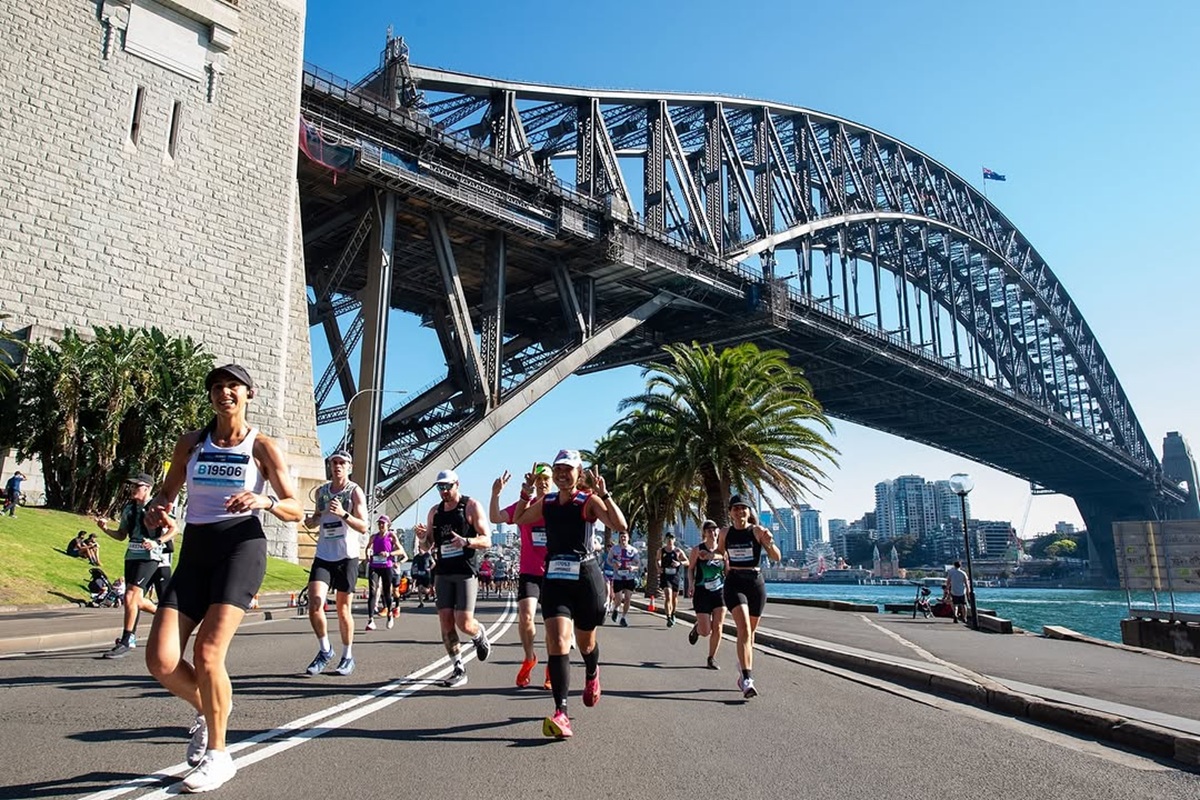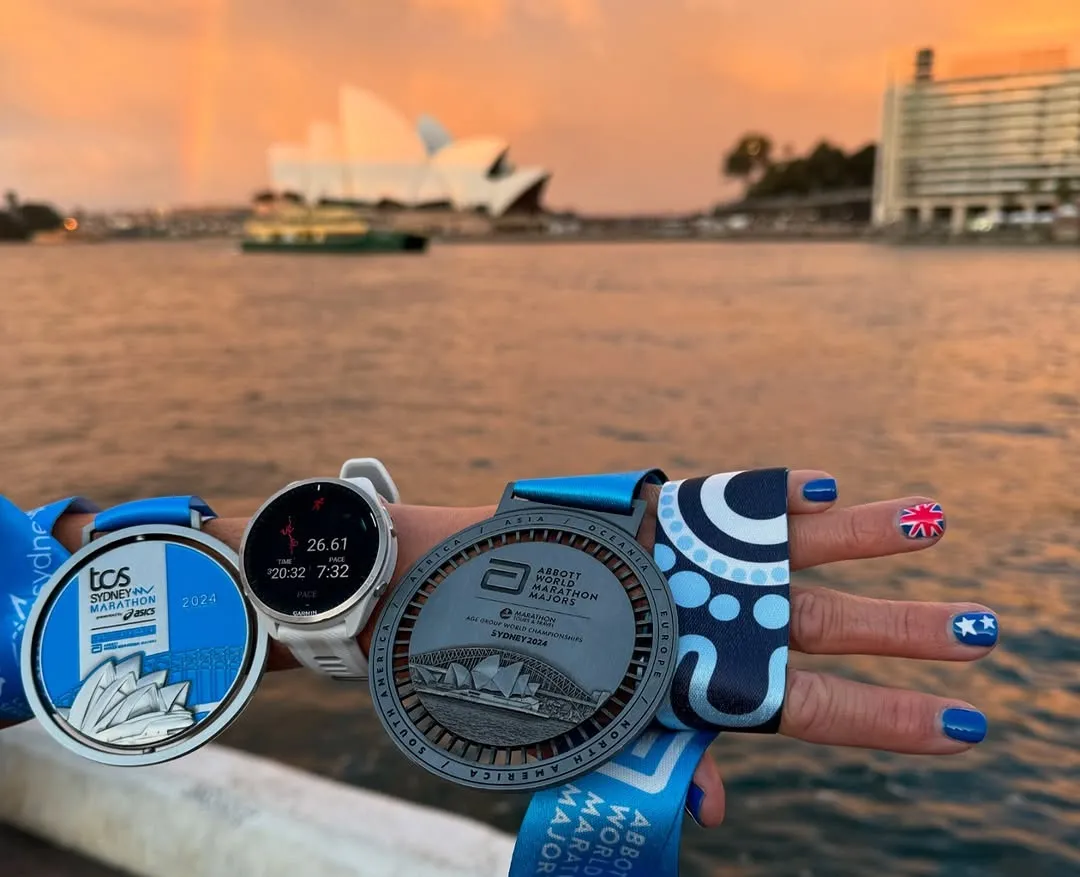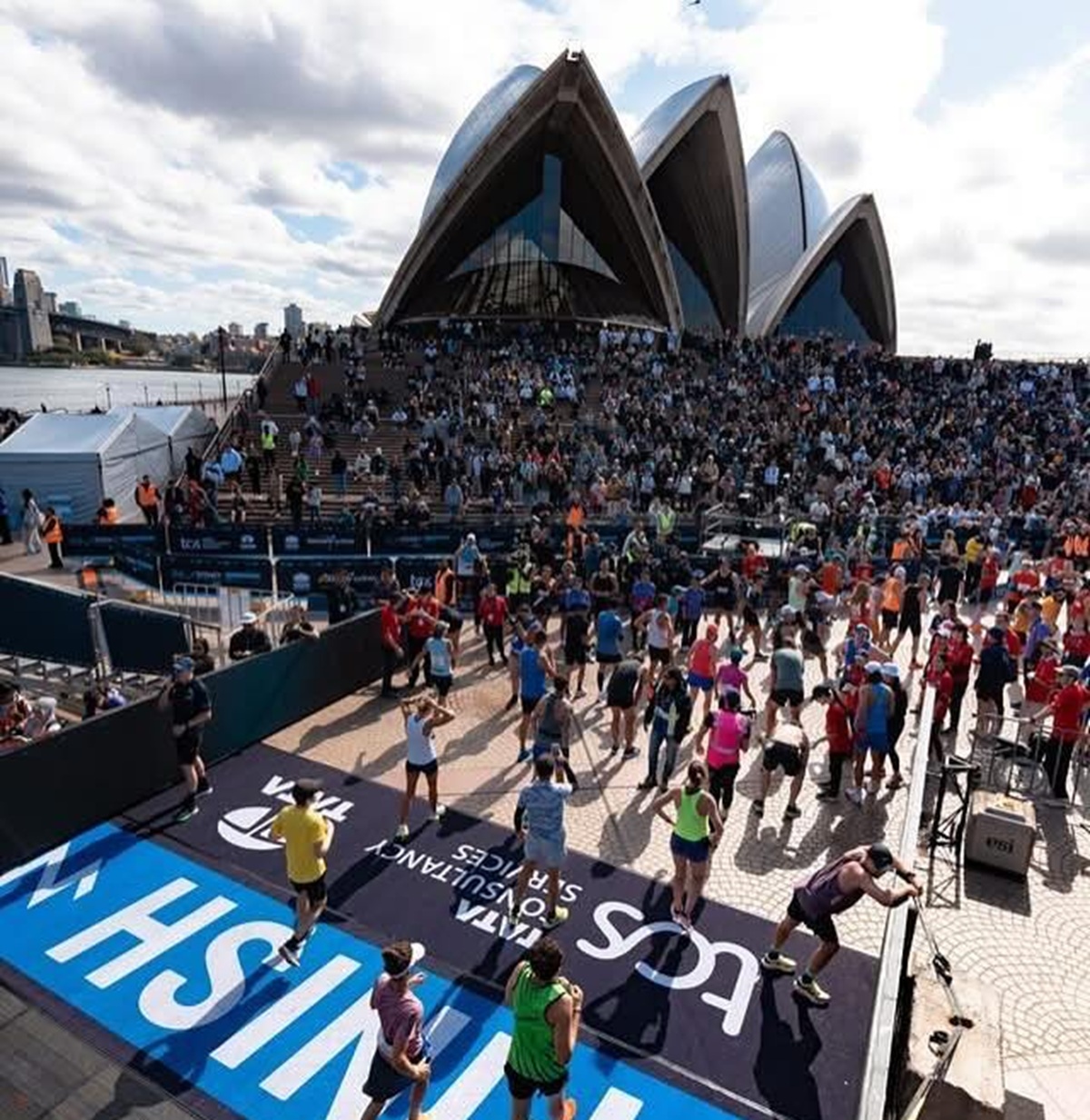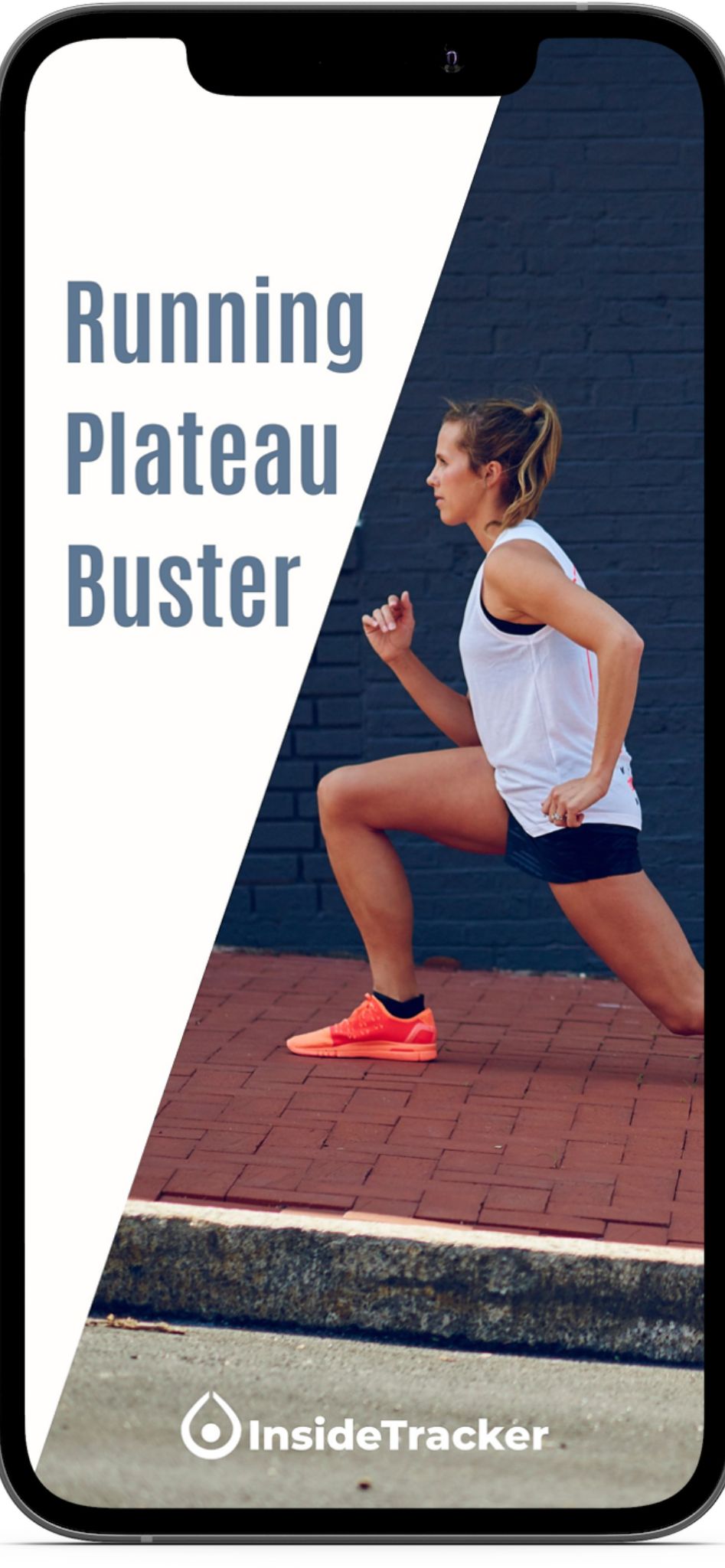Anyone getting ready to run the Sydney Marathon needs to read this! 2025 is the World Marathon Majors debut for the Sydney Marathon, which means a lot of folks are paying attention to it for the first time. It’s the hilliest of the majors and should not be discounted!

Traveling internationally for a marathon can add another layer of stress and anxiety. We’re going to breakdown what you need to know around training, travel and race day to make it all feel smoother.
There are a lot of questions about logistics, the expo, and everything in between. We’ve researched it all and talked to runners who ran the 2024 race to put together this Sydney Marathon Guide.
Sydney Marathon Tips
2025 is going to be the first year that the Sydney Marathon is officially a World Marathon Major. Runners now have the opportunity to earn their 7th star.
This year’s event will take place on Sunday, August 31st, 2025 with the first wave starting at 6:30am just after sunrise!
Let’s dive into some important tips about what to expect during race weekend.
With any race, there are a few standard recommendations for our athletes:
- Save the sightseeing for post race. I know you want to explore, DON’T. If you must, there’s a ferry that you can ride around to see some of the beaches and parks. Rest your legs while you take in the views!
- Have your what to eat before the marathon meal with you or planned out, so you know it’s food you tolerate. We saw a lot of issues in Berlin with unknown foods causing race day GI issues.
- Don’t get sucked in to previewing the course by bike or car. It’s going to take forever and absolutely freak you out. Especially with all the roads that will be closed.
#1 Train for the Hills
The entire Sydney Marathon elevation gain is about 1,040 feet, with a big drop within the first 4kms. You can see from the elevation map that you’re going to get very few, if any flats to catch a break during the Sydney Marathon course. So it’s even more important that throughout training, you’re incorporating ALL of the hills.
We want to ensure that you feel confident and strong going up and down the rolling hills!
That’s going to mean doing a few different things in your training:
- Early on try adding hill sprints to the end of some workouts, it’s one of the be speed workouts you can do to build strength and feel more confident on hills.
- Also find somewhere you can practice doing a long steady uphill run for 2 miles. This will increase overall stamina and make the shorter hills feel more doable.
- Get some practice running downhill and incorporate downhill strength to keep those quads happy. That’s going to mean adding lots of static lunges to your week.
- If possible find routes for your long runs that mimic the different hills, sprinkle in your goal pace as well, so you get comfortable modifying your effort!

The last 400m is going to be a downhill into the beautiful Opera House which will be a nice relief after the rolling hills throughout the course! (Though again, only if your quads are strong!)
If you live in a relatively flat area, now is the time to embrace the treadmill so that you can get practice running hills. Add hill strides or short intervals where you vary the incline.
In comparison to the New York City Marathon and/or the Boston Marathon, the Sydney Marathon is going to be the course with the most elevation gain.
#2 Sydney Marathon Running Show
The Sydney Marathon Running Show, is Australia’s biggest running expo. It’s going to be a big event with lots of vendors. Plan to go early so that you can rest your legs the days right before the race. OR be conscious of keeping your visit short and not standing around too long.
You must pick your bib up with your assigned QR code and a form of ID that matches the name on your registration. Friends and family are not able to pick your bib up for you.
The Running Show will be open Thursday, August 28th at 9am through Saturday, August 30th at 4pm.
The Sydney Marathon Running Show is held at:
International Convention Centre (ICC),
Sydney – on Level 4, 1
4 Darling Dr, Sydney
NSW 2000

#3 Plan Well Ahead for Your Start Line Arrival
Nothing is worse than the nightmare that you’ve missed the start…other than actually missing it.
With 40,000 runners across all three races, many will be taking trains to get to the start, so planning ahead is a must!
6:15am is the elite wheelchairs
6:30am is the official start of the race
Depending upon your wave, it could be 20 to 90 minutes before you start the race. Make sure to plan for that with your spectators.
Where to Stay?
This is one time where staying near the start isn’t the big win we often look for. Instead, you’ll like want to stay closer to the finish so you can enjoy the heart of Sydney and get back for that hot shower.
There are a lot of hotels around the area of the finish line and most of them will be a 10 minute walk to the train station on race morning.
Transportation to the Start Line
The start is located in Northern Sydney, just a short walk from the North Sydney Oval. The best way to get there is by taking the train to the North Sydney Station stop and then walking to the starting area.
Based on information from last year, it looks like depending on your starting time and corral will dictate where you should arrive.
From the NSW website:
- Those in starting groups A, B, E or F should arrive via the new Victoria Cross Metro Station or North Sydney Train Station.
- Those starting in group C or D should arrive via the new Crows Nest Metro Station.
*this information may change as we get closer to the 2025 Sydney Marathon.
#4 Sydney Marathon Start Line Details
A few things you need to know specifically around the Sydney Marathon Starting area at Miller Street, next to North Sydney Oval. Race organizers made some big changes to accommodate the estimated 35,000 marathon runners.
Bag Check
All checked bags must be dropped off at the Running Show. Any bags brought race morning will be discarded and you will not find them at the finish.
You can only use the bag provided by the race when you pick up your bib.
Bags checked at the Running Show will be brought to be retrieved ~600m from the finish line.
Starting Corrals
You will be assigned a corral based on the expected finish time that you submitted during registration.
The race has very strict cut-off time of 8:15am. If you miss your time, the event team and volunteers will not permit any runners to cross the start line after that 8:15am cut off time.

There will be an estimate of 1.5 – 2 minute gaps between each wave. If you’ve run the Chicago Marathon before, it sounds like it’ll be a very similar set up!
If you feel that your expected finish time will be different, you’ll have the opportunity to change it closer to the race date.
Sit Down
Don’t waste tons of energy standing around. Bring a plastic bag or something to sit on that you can throw away.
You’re about to run 26.2 miles and standing is taking energy, and making your legs sore. Sit. Wait. Then get up do some dynamic moves and get in to your corral.
#4 Sydney Marathon Weather
August is the end of winter in Sydney, so the good news is you won’t be running in super hot temperatures! It’ll be perfect running weather with temperatures possibly ranging from 48°F to 68°F.
Take Throw Away Clothes
Everyone we spoke with who ran the marathon in 2024 mentioned how cold it was the morning of the race since the arrival time is before sunrise. Pack throwaways in your luggage to be. If you’re sitting there shivering, that’s wasting extra energy trying to keep yourself warm before the race even starts.
- Bring throw away gloves so you can even wear them the first few miles
- Reuse a mylar blanket from a previous race
- Bring hot hands!
- Absolutely cover your head to keep in the heat
- Bring an old blanket and old clothes – there will be plenty of areas to dispose your layers!
Sydney Marathon Course Strategy
Very nice course, started with a nice long downhill with the exception of the bridge. Not too crowded once the initial mile was over. I didn’t find any of the rolling hills challenging. My start was about 40 minutes behind schedule, waiting for earlier waves to get by. Beautiful finish with a long 2k downhill. A good amount of hydration stops and nutrition. Will repeat when it becomes a major!- Pablo
With the estimated 35,000 runners that are expected for the 2025 Sydney Marathon, race organizers have made a few changes to the course so that it’s a more streamlined route.
Because they still had to cover 26.2 miles throughout Sydney, be prepared for a few out-and-backs. Get your mantras ready for when things get mentally tough.
If you’ve participated in past years, it’s going to look a little different with fewer U-turns, removal of tight sections, and an earlier start time.
The World Marathon Majors are gaining in popularity, which is super exciting, but this means that courses are more crowded than in the past.
Unlike other courses, the Sydney Marathon is marked only with kilometres. Start getting familiar with the distances and pacing if you’re relying on signage.
Limit Your Weaving
No matter where you start in such a crowded course there’s going to be a need to pass people.
- Try not to make any massive weaves, this will add distance to your race
- Just move slightly to the side and keep going
- If you run in to a large pile up, it’s probably a pace group. Try to move to the side to get away from the pacer if you don’t like all the jostling.
Stick to the Blue Line
Look for the blue line and try to run as close to it as possible throughout the race. This will help you run the tangents, which means the best chance of only running 26.2.
First Kilometer of the Marathon
Repeat after me: I will not start out too fast.
We’re all guilty of it, but for the Sydney Marathon, this is a significant downhill right as you cross the starting line and go down to the bridge. Control your stride and pace, avoiding your adrenaline from pulling you super fast.
If you end up 20 seconds faster than goal pace that might be natural momentum and you will need to pull it back in as soon as the downhill ends. Allowing yourself to continue that pace is going to lead to hitting the wall later.
Sydney Harbor Bridge
This will be right after that steep downhill around 1.2 kilometers. The bridge will have a +2.5% uphill and then -3% downhill. Try slowing down just before starting the climb so that you can focus on maintaining an even level of effort going up AND DOWN.
Remember this is still so early in the marathon, so don’t waste a lot of energy here trying to push the effort. Save that for the later km.
On the Runchats with RonRunsNYC podcast, James Constantine from the TCS Sydney Marathon, talked about how everyone will get to experience the sun will be rising to your left as you go over the bridge. If you’re having any nerves at this point, this breathtaking view will help you forget about all of the hills you have ahead of you.
Uphill #2 Oxford Street
This is going to be the first of two big uphill climb that you’ll run in the marathon. There will be around a +3% grade. Remember to focus on your form here, take small steps and use your arms to get to the top of the hill.
A great tip is to try timing your fuel just before some of these big climbs to give you that extra energy.
Uphill #3 24-27k
After a small downhill after Oxford Street, here is where you’ll experience another uphill climb of around +1% grade.
This is a SUPER MANAGEABLE incline but you’re about half way through the marathon at this point so energy levels may be waning.
Stay on top of your fueling, keep your eyes up so your body is moving up and not looking down at your feet.
Oxford Street to Botanical Gardens
This is going to be from 34.8kms to 38.4 km where you’ll get a little downhill treat before attacking the final big uphill climb of the course. Take advantage of this so that you can collect yourself before one final push.
Final Uphill Climb
No one ever likes to see a huge hill at the end of a marathon but here it is. Again, there will be around a +3% grade.
None of these are incredibly steep, it’s just the repetition and thus your need to remember all the cues to stay standing up straight, think about small quick steps, repeat your mantras and lean in to the discomfort to reach your goal.
But the good news is, once you get to the top of this hill the finish line is just on the other side!
When we chatted with Tom Harding (known as tommyruns_ on Instagram), he said that this was the hardest part of the course. That final climb around Mrs. Macquarie chair, after you just turned into the Botanical Gardens, will have you gritting your teeth as you head back uphill to marker 40- 1ish km before you get that smooth downhill into the Opera House.
Steady 400m Downhill Finish
After all of the rolling hills, this is where you’re going to be a big downhill straight into the finish line.
While we want you to have a strong, fast finish, it’s almost important to remember not to totally let go of your form. Keep your effort controlled but strong.
Your quads are likely going to be sore but with some strength training, it won’t be as bad!

You’ll quickly forget about all of the hills you just experienced, as the roars from the crowds lining the finish area will bring you across that line.
By the time you’re finishing the marathon, it’s going to be a lot warmer, so plan ahead to check a bag with post-race electrolytes. There will also be a huge finishers’ area with tents and all kinds of post-race stuff.
From Ron’s chat with James Constantine, it sounds like no matter where you find yourself on the course, there is going to be something happening. The people of Sydney love to come out and support all of the runners along the marathon course.
Be prepared for some areas to be loud! You can expect the crowds to get larger and larger as you get closer to the Opera House.
We anticipate that there may be some changes to the course that haven’t been announced yet. Our team will update this blog as soon as any new information is available closer to the race date!
Sydney Marathon FAQs
Here are some of the most common questions that us run coaches receive around marathons.
What is the Sydney Marathon Cut Off?
The cut off time is 7 hours (3:15pm).
Can You Wear a Hydration Vest to the Sydney marathon?
Yes, you can wear vests with bladders or carry a handheld for your personal hydration needs.
What will they have at the aid stations?
FIXX electrolyte and water will be available throughout the course every 5km.
GU Gels are available at 20km and 30km but the quantity is limited, so still plan to carry your nutrition and maybe even a little extra!
All drink station locations are marked on the course map, and there are portable toilets at each drink station.
Are there Pacers?
Yes, there will be a team of pacers wearing a Red TCS Sydney Marathon Pace Team singlet in addition to a flag and pace time on their back.
Pace groups will go from 2:40 through 7:00. The groups will have goal finish times every 10 minutes. For example, 4:10, 4:20, 4:30 and so on.
There will also be a sweeper group.
How to Run the Sydney Marathon?
Enter the lottery when it opens up and then cross your fingers. Or you can go through a charity spot. This is an amazing way to get into big races, but it does mean you’ll need to spend time fundraising alongside your training.



 Suunto Run Review | More Run Specific Modes to Dial in Training
Suunto Run Review | More Run Specific Modes to Dial in Training
